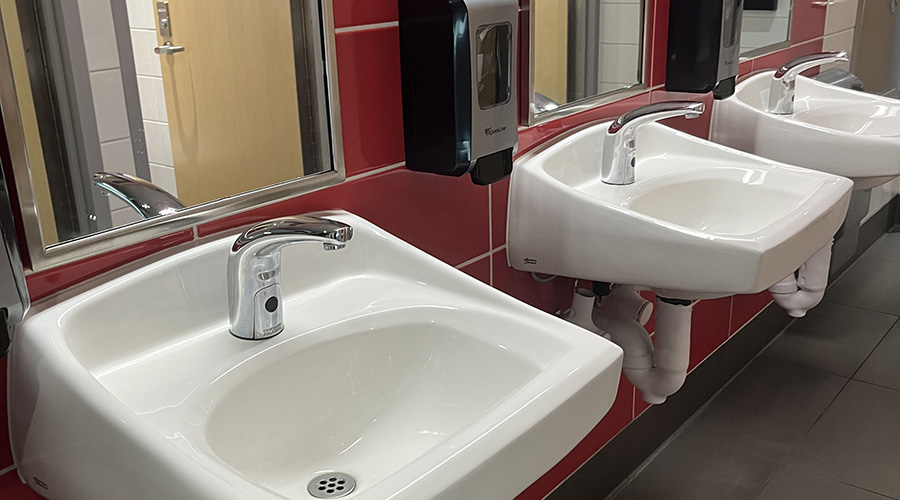New Restroom Products Shape Renovation Options
Commercial and institutional restrooms are high visibility, high maintenance areas. While most are designed to function effectively for 15 to 25 years without major upgrades or renovations, normal use and abuse do take their toll. Over the years, fixture surfaces dull, creating the appearance of unsanitary conditions. Fixtures and their controls wear, increasing both water use and maintenance requirements. Breakdowns and vandalism can force facility executives to replace components well before they have reached their rated service lives. As conditions deteriorate, the number of complaints about restroom conditions will increase. Eventually, facility executives will have to implement a major renovation program.
While restroom renovations are costly and disruptive, they are an opportunity to improve appearance and functionality while reducing operating and maintenance costs. But before committing to a restroom renovation, facility executives should learn about the new generation of restroom products. Chances are that much has changed in features, functions and performance since the typical existing restroom was designed. Touchless controls and components are now standard, replacing manual valves and other devices and resulting in reduced water use and maintenance requirements. High-tech finishes resist vandalism and make surfaces and components easier to clean while reducing cleaning interval.
Facility executives should also develop an understanding of the needs of the restroom users. For example, restrooms in high-demand areas require designs that speed the flow of traffic. Fixtures and materials used in high-demand areas should be selected based on how easily they can be maintained and cleaned. Nothing disrupts high-demand areas more than having to shut down facilities for maintenance or cleaning.
In restrooms subject to high abuse, fixtures and materials should be durable and resistant to abuse and vandalism.
And don’t forget that the final design of the restroom will have a big influence on the image the building presents to both occupants and the general public. Successful designs require planning and attention to detail that go well beyond picking fixtures and finishes. Designs must match the needs of the facility.
Related Topics:















